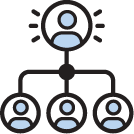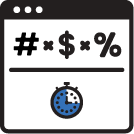As a salesperson, one really important thing to do when looking to the future is to start thinking about an Ideal Prospect Profile, not necessarily an Ideal Customer Profile. An Ideal Prospect Profile (IPP) refers to the perfect persona of a prospect; the prospect with the highest potential to be converted into a customer, also taking into account the timeframe attached. Your ideal customer might be one who gets maximum value from your solution, who loves you and whose name and use cases make you look great. However, they might not necessarily be your ideal prospect profile. Okay, we know what you’re thinking: how could it not be your IPP?
To elaborate on that, let us tell you a story.
This is Jake.
He recently joined the revenue team here at MEDDICC, but he used to work in San Francisco, where he was a pretty successful seller (why else would we have got him to join the team?). But then something great happened. When en route from California to London on vacation, Jake fell in love with the flight attendant! So much so, he wants to move to the UK.
Since he’s a good guy, and his company had a UK office, they grant him the move. So, Jake arrived in London and things were looking good: good salesperson, good track record, and healthy market. But despite that, somehow Jake wasn’t selling anything.
So what happened? Was it Jake? Did he suddenly change? Was it the accent? Was it the market? No; because all of those things were working fine with other salespeople. The reason was that Jake had picked up his territory based on what his company’s 4 ideal customer profile was. Think accounts like Nike, Citibank, or UberEats. These were great customer profiles, with great logos and great use-cases. He looked at the EMEA versions of those accounts, and looked at Adidas, HSBC and Deliveroo. But here’s the thing: ideal customer profile does not necessarily equal ideal prospect profile.
While these kinds of accounts were perfect from a value perspective, they are hard to sell to! They have multiple stakeholders in different departments, so engaging with them can be like trying to spin too many plates. This is of course not to say that you should never sell to these companies, but in a downturn it may not be the wisest pursuit. When it’s harder to sell to these companies, it will impact your conversion rate. On top of that, these companies will often have quite thorough evaluation processes, which means you get pushed through harder procurement processes. Therefore, the size of the opportunity becomes lower and lower in relation to the ACV, and these deals tend to take a longer time to close. Together, these things do not make an ideal prospect.
So what did Jake do next? He started implementing MEDDPICC, and took to it like a duck to water. And, what he figured out was that he needed to qualify out, because he wasn’t going to close them. He then looked at the US team’s data, because they were doing incredibly well. From that data, he was able to discern that there were cohorts of types of accounts and prospects that he could duplicate in the UK. These included companies like crypto exchanges and online learning platforms; accounts that maybe at first glance weren’t as impressive as what he was originally looking at, but ones that if he brought them into his territory that he could sell to them much, much quicker.
 The outcome from all of this for Jake was pretty fantastic: he finished at 138% of his target number, and he was top globally in percentage of target, and brought some of the biggest wins in his territory. Most importantly, he is still with his partner - they even have an adorable dachshund puppy, Frank!
The outcome from all of this for Jake was pretty fantastic: he finished at 138% of his target number, and he was top globally in percentage of target, and brought some of the biggest wins in his territory. Most importantly, he is still with his partner - they even have an adorable dachshund puppy, Frank!
So, the moral of the story: win more by being smarter! Stop assessing opportunities by quantity, think about quality. Look for customer profiles that you have GTM support for (think use-cases and references), as those will have a higher win rate. Think about companies that are in prosperous markets (for example, don’t target travel during a global pandemic… just a suggestion!), that have relatively agile buying processes, where you can close them quicker.
Then, you can use MEDDPICC to nail value, stakeholders and process.









.png)






















%201.png)













